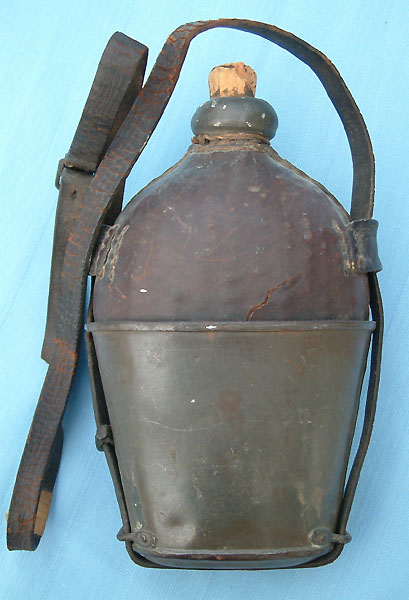Hi Guys
This is my first attempt at placing an image and text on the site so I hope this works out and I apologise for an awkward beginning.
I thought it might be interesting to show two original images of Bavarian Infantrymen circa the Franco-German War of 1870-1871. The original images are CDV size, that is about 2x4 inches overall.
The first gentlemen is one that you have met before, Joe was kind enough to list him for me previously on the site. It shows quite nicely a typical Infantryman of the day armed with the 1867 pattern Podewils Rifle. A modified muzzleloader now percussion fired breechloader, which was modified after the rough handling of the Bavarian troops by the Prussian Needle Gun in the Austro-Prussian War of 1866. It was the weapon that most of the Bavarian Infantry carried into battle against the French armed with the M1866 Chassepot Rifle. The Chassepot was a superb rifle for its day and had a range advantage of nearly three to one to the Podewils. Regardless of its shortcomings, the Podewils rifle saw the Bavarian troops through the entire six month war and was carried in every battle the Bavarian soldiers fought in. Interestingly this man wears on his chest the medal for the 1866 war against the Prussians, now his ally and brothers in arms.

The second soldier carries the weapon they all wanted, the breechloading metallic cartridge, M1869 Werder rifle. The Werder Rifle was another outstanding weapon for its time and has been described as the best infantry rifle carried by the German forces during that war. Sadly for the Bavarian soldier, only a few regiments and battalions were armed with the Werder by August 1870. However it did continue in service after the war until the adoption of the M1871 Mauser rifle. Both of these men are shown carrying full field equipment to include the metal bottomed Bavarian canteen. A side note would be a mention of their headgear, the man with the new rifle has the new helmet, whilst his comrade with the Podewils has the tried and true M1842 Raupenhelm.

This is my first attempt at placing an image and text on the site so I hope this works out and I apologise for an awkward beginning.
I thought it might be interesting to show two original images of Bavarian Infantrymen circa the Franco-German War of 1870-1871. The original images are CDV size, that is about 2x4 inches overall.
The first gentlemen is one that you have met before, Joe was kind enough to list him for me previously on the site. It shows quite nicely a typical Infantryman of the day armed with the 1867 pattern Podewils Rifle. A modified muzzleloader now percussion fired breechloader, which was modified after the rough handling of the Bavarian troops by the Prussian Needle Gun in the Austro-Prussian War of 1866. It was the weapon that most of the Bavarian Infantry carried into battle against the French armed with the M1866 Chassepot Rifle. The Chassepot was a superb rifle for its day and had a range advantage of nearly three to one to the Podewils. Regardless of its shortcomings, the Podewils rifle saw the Bavarian troops through the entire six month war and was carried in every battle the Bavarian soldiers fought in. Interestingly this man wears on his chest the medal for the 1866 war against the Prussians, now his ally and brothers in arms.

The second soldier carries the weapon they all wanted, the breechloading metallic cartridge, M1869 Werder rifle. The Werder Rifle was another outstanding weapon for its time and has been described as the best infantry rifle carried by the German forces during that war. Sadly for the Bavarian soldier, only a few regiments and battalions were armed with the Werder by August 1870. However it did continue in service after the war until the adoption of the M1871 Mauser rifle. Both of these men are shown carrying full field equipment to include the metal bottomed Bavarian canteen. A side note would be a mention of their headgear, the man with the new rifle has the new helmet, whilst his comrade with the Podewils has the tried and true M1842 Raupenhelm.


